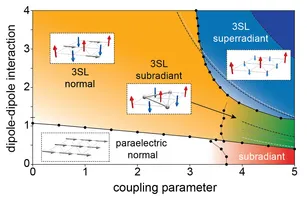Cavity QED and circuit QED in the ultrastrong coupling regime

Quantum electrodynamics (QED) is the fundamental theory for charges interacting with the electromagnetic field. QED is a weakly interacting theory, as evident by the smallness of the finestructure constant. In quantum optics or solid-state physics, it is exactly this property that allows us to model light-matter interactions in terms of well-defined photonic and atomic excitations on top of a trivial vacuum state. However, with recent advances in the field of circuit QED it is now possible to go beyond this well-established paradigm. In these systems, the effective coupling between a single artificial atom (a superconducting qubit) and a microwave photon can even exceed the energy of the photon itself. From a more general perspective, such conditions can be interpreted in terms of an effective finestructure constant of order unity and give rise to many questions related to the general structure of light-matter interactions in a strongly-interacting, i.e., non-perturbative theory of QED.
People: Lucia Valor, Rocio Sáez-Blázquez
Selected publications
-
Can We Observe Nonperturbative Vacuum Shifts in Cavity QED?, R. Sáez-Blázquez, D. De Bernardis, J. Feist, and P. Rabl, Phys. Rev. Lett. 131, 013602 (2023).
-
The Vacua of Dipolar Cavity Quantum Electrodynamics, M. Schuler, D. De Bernardis, A. M. Läuchli, and P. Rabl, SciPost Phys. 9, 066 (2020).
-
Thermodynamics of ultrastrongly coupled light-matter systems, P. Pilar, D. De Bernardis, and P. Rabl, Quantum 4, 335 (2020).
-
Breakdown of gauge invariance in ultrastrong-coupling cavity QED, D. De Bernardis, P. Pilar, T. Jaako, S. De Liberato, and P. Rabl, Phys. Rev. A 98, 053819 (2018).
-
Cavity quantum electrodynamics in the non-perturbative regime, D. De Bernardis, T. Jaako, and P. Rabl, Phys. Rev. A 97, 043820 (2018).